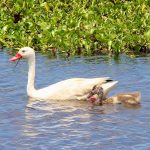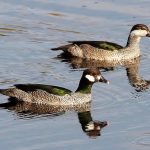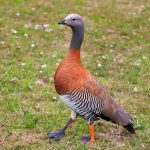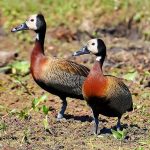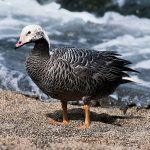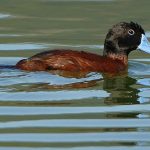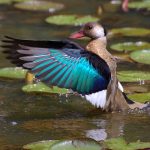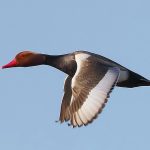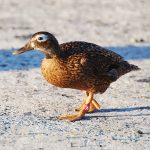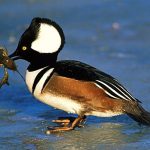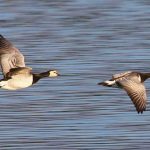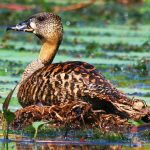Baer's pochard
 |
| Photo by Lester Wareham (The Holding Tank) |
Common name:
Baer’s pochard (en); zarro-de-Baer (pt); fuligule de Baer (fr); porrón de Baer (es); Baermoorente (de)
Taxonomy:
Order Anseriformes
Family Anatidae
Range:
This Asian species breeds in the Amur and Ussuri basins, in south-eastern Russia and north-eastern China. It migrates south to winter from southern China, west to Bangladesh and eastern India, and south to Taiwan, Myanmar and occasionally Vietnam.
Size:
These birds are 41-46 cm long and weigh 650-700 g.
Habitat:
The Baer’s pochard is found breeding in shallow lakes and freshwater marshes, but also in fast-flowing rivers, as long as there is rich aquatic vegetation where they can build a secure nest. Outside the breeding season in lakes, reservoirs, rivers, freshwater marshes, rice fields and in islands within freshwater lakes.
Diet:
They dive up to a depth of 2 m to hunt aquatic insects, molluscs, shrimps and fishes. They also eat algae, aquatic plants and seeds, especially during winter.
Breeding:
Baer’s pochards breed in May-July. The nest is made of aquatic vegetation and placed in a tussock, in floating vegetation, in dense reedbeds or sometimes in the branches of trees. There the female lays 9-15 eggs, which she incubates alone for 23-28 days while the male guards the nest and collects food for the female. The chicks leave the nest soon after hatching, but remain with their parents for 2-4 weeks.
Conservation:
IUCN status – EN (Endangered)
This species has a very large breeding range, but the global population is estimated at just 5.000 individuals. The population is estimated to be undergoing a fast decline caused by hunting and habitat loss due to wetland destruction in both their breeding and wintering grounds.


